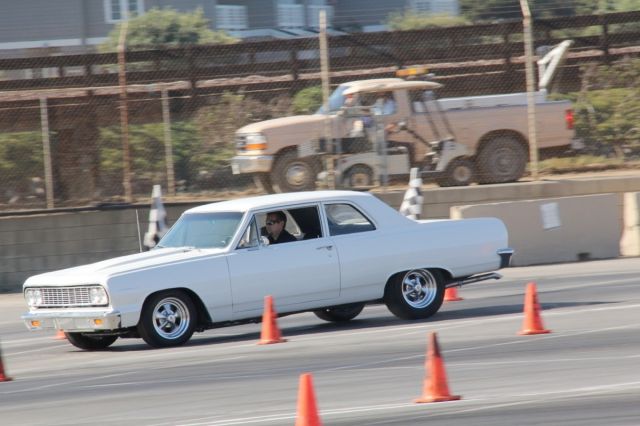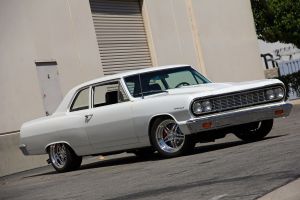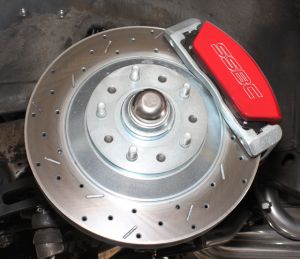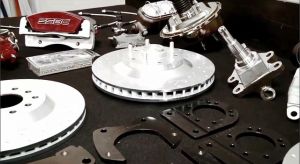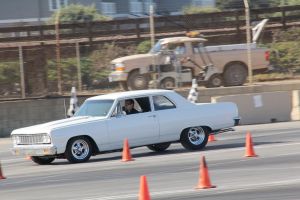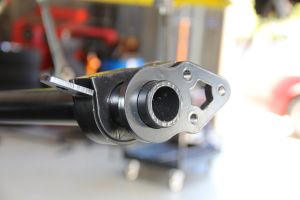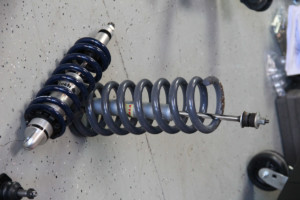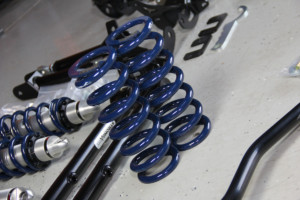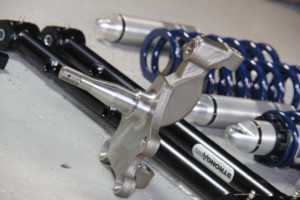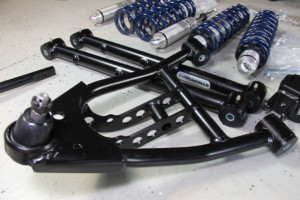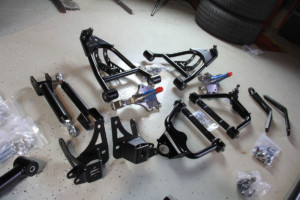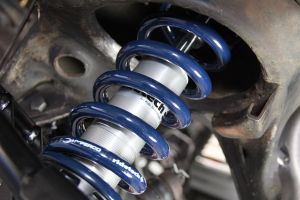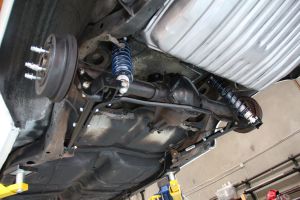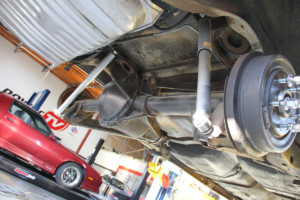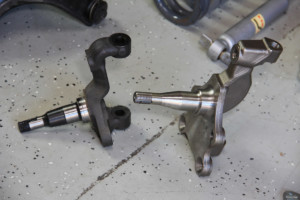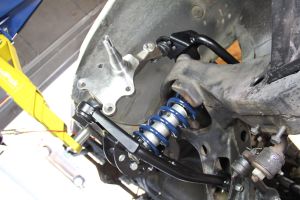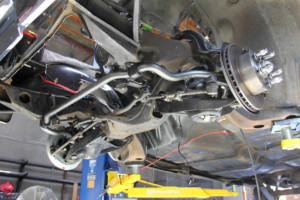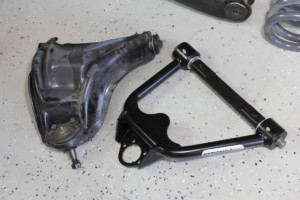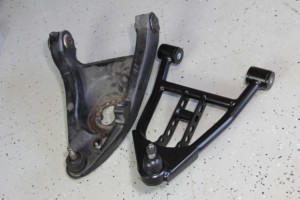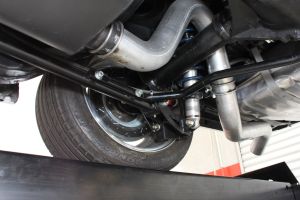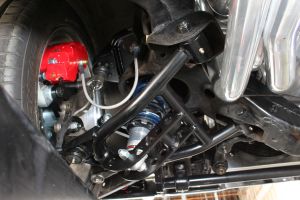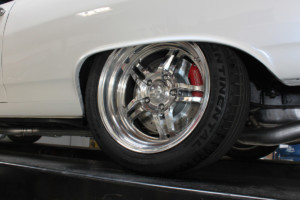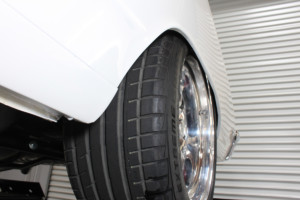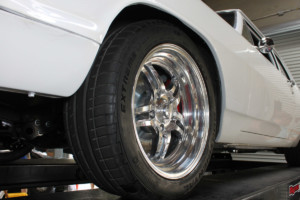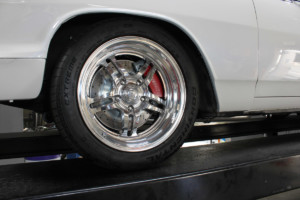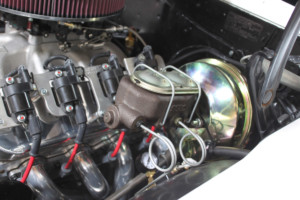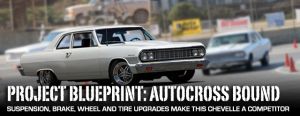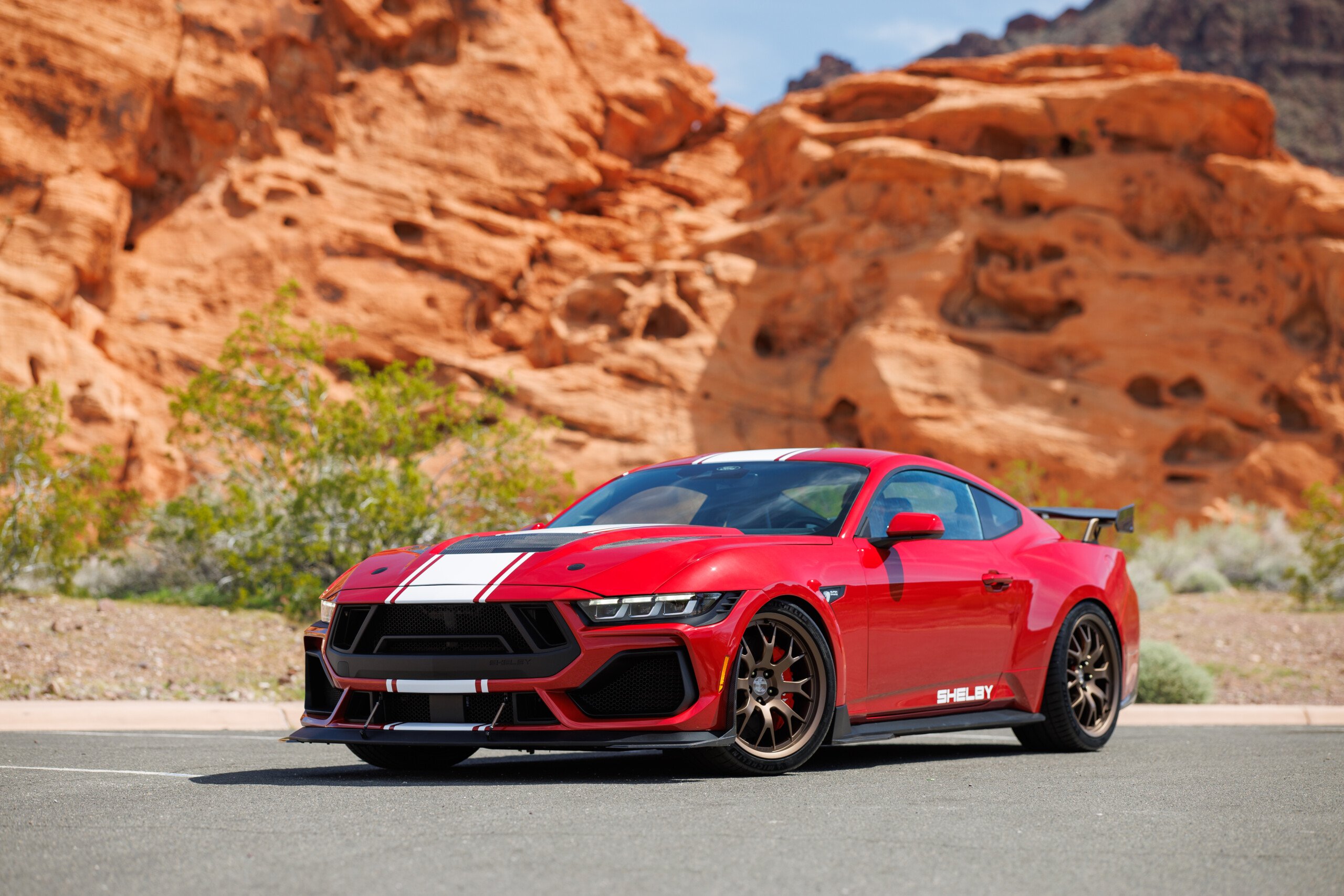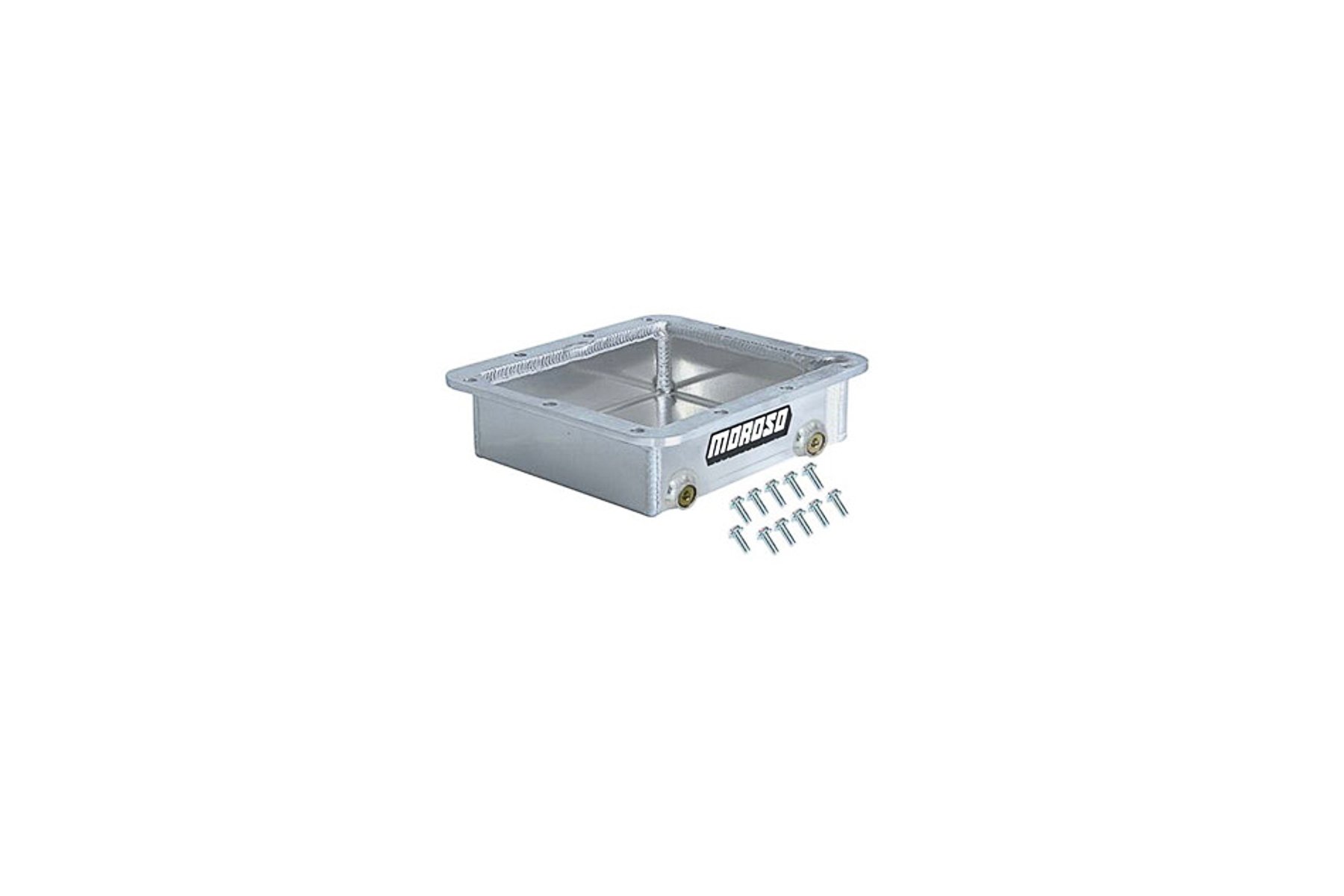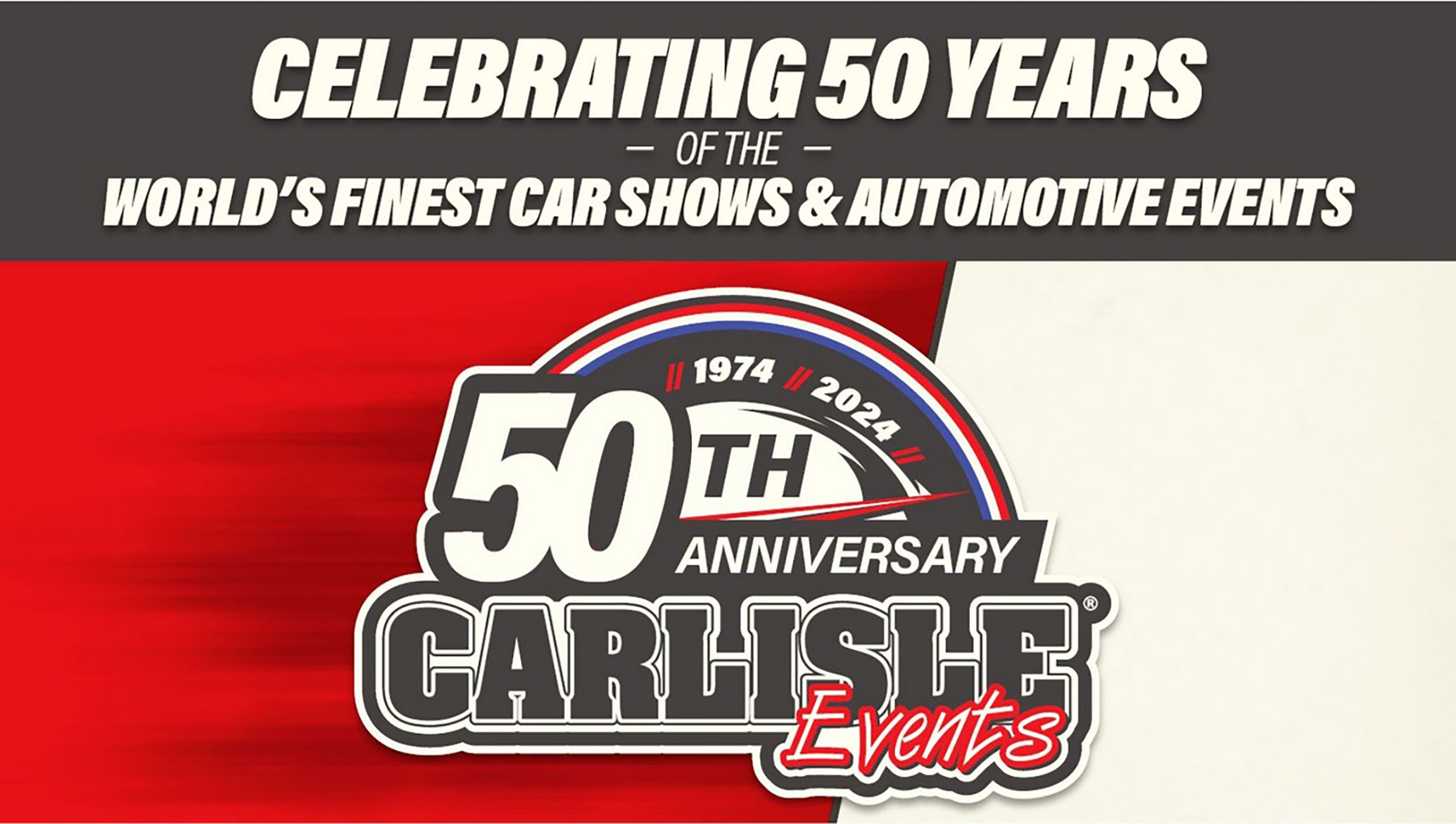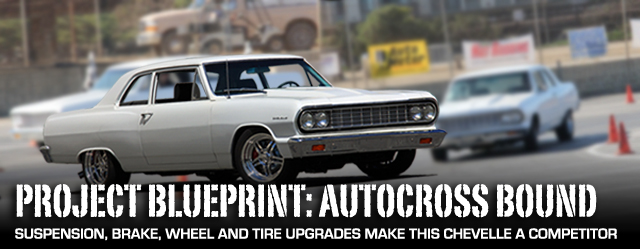 With the popularity of the Pro Touring scene and events like the autocross at Goodguys Super Sunday, more and more manufacturers are designing suspensions and braking systems that allow classic cars to handle better than they were ever intended to, as well as make them more drivable these days. These classic cars were always great for going straight and going fast, but the handling was a different story.
With the popularity of the Pro Touring scene and events like the autocross at Goodguys Super Sunday, more and more manufacturers are designing suspensions and braking systems that allow classic cars to handle better than they were ever intended to, as well as make them more drivable these days. These classic cars were always great for going straight and going fast, but the handling was a different story.
Many classic cars are quite a bit larger and heavier, and you don’t have to drive rush hour traffic to find some lunatic cutting you off or making your otherwise pleasant drive a very uncomfortable experience. If you ask some people why they don’t drive their classic car more often, sometimes the answer has a lot to do with how much of a pain it is with all of those nimble drivers that can’t stay in one lane – or at one speed.
That was yesterday, and today we’re seeing these cars handle better than almost anything that the small-car segment can throw at us. We’re also seeing them run through an autocross with incredible handling and braking, and if you’re wondering what makes these cars do what they do so well, then let us introduce you to Project BluePrint, our 1964 Chevrolet Chevelle Sport Sedan.
Bought with a Purpose in Mind
We had plans for our Chevelle right from the start, and we’ve taken it to the extreme. We’ve given it the power we were aiming for by way of a 630 horsepower LSX engine built by BluePrint Engines, and now we’ve also given it a new set of shoes from Continental and Billet Specialties. With looks that kill, and a rumble to match, we’ve also added the hardware necessary to get the Chevelle to handle any track we take it to with suspension components from Ridetech and brakes from SSBC.
Even though conquering the track is our ultimate goal for this car, these upgrades make it a lot more fun to drive no matter where you’re going or what you’re going to do with it. It’s modifications like these that make other people want to drive their own classic car more than just the weekend car shows. If you’re like us, you want to drive your car whenever you want to, not just take it to a show one day and then put it away for the rest of the week.
Leaving a Bigger Footprint
Like peanut butter and chocolate, wheels and tires are only great when you put the right combination together. Knowing the right wheel width for your tires will give you the performance that the manufacturer intended for the tires. For many stock restorations, the factory steelies are retained and a set of tall, narrow tires are installed to keep it looking stock. That’s fine if you want to impress the judges or purists at a car show, but if you want more from your muscle or classic car, or even your street rod, then the first thing you have to do is upgrade your tires and wheels.
Tall tires have a large sidewall that flexes quite a bit in in cornering. We all remember the days when we wanted the biggest, fattest tire in the back and pizza cutters up front because that was the look back then. But today it’s not just about stop light to stop light, it’s about driving your car and making it a cool canyon carver, or tearing it up at the autocross. The shorter, stiffer sidewall on lower profile tires greatly enhances your cornering ability.
Getting the right stance and look isn't going to happen without some planning. For BluePrint, we wanted wide, low profile tires for when we hit the autocross course.
Using the right combination of tire and wheel has helped these classic cars perform and handle better, on the road and especially at the track. Too low of a profile and your ride quality suffers a little, too high of a profile and your handling performance suffers a little.
Even though it’s sometimes a great look, it’s not always about getting the biggest wheel or the widest tire. So you also have to know what your limits are so your tires don’t rub. With BluePrint we got the fitment, look and stance we wanted with our tire and wheel combination. You might see people going with larger wheels, but these early cars don’t always accommodate the larger wheels like you see on the late model retro-muscle cars.
To get an idea of what will fit and what won’t, you can test fit several different tires and wheels. It helps if you have friends to let you borrow their wheels and tires, or if you have a buddy at a tire shop. Another way to figure it out is that you can take measurements of your wheel opening, and the depth of your fender wells, and determine what tire will fit your vehicle. There are even tools you can get to help with offset, or you can take measurements from the mounting surface to the fender lip and the inner wheel well. Most tire and wheel manufacturers will be glad to help you out with your tire fitment needs.
We went as wide as we could get in the rear without having to tub the rear wheel wells.
For BluePrint’s tires, we went with Continental’s new line of performance tires, the ExtremeContact DW. These are Continentals Ultra-High Performance summer tires for performance driving in dry or wet conditions. The Z speed rating and tire aspect ratio will give us the handling characteristics we need to navigate through the cones. These tires are designed for “spirited” driving, and Super Sunday is in our scope.
Our front tires are a wide P245/45/ZR17, and for the rear a slightly wider P275/40/ZR17. The rear tires are tucked up under the quarters with just enough room for a stick of gum, but without tubbing that’s about as wide as we’re going to get. Making sure the fronts don’t rub while turning is another thing to keep in mind. Go too wide and you’re going to regret it, or you could easily cut a tire.
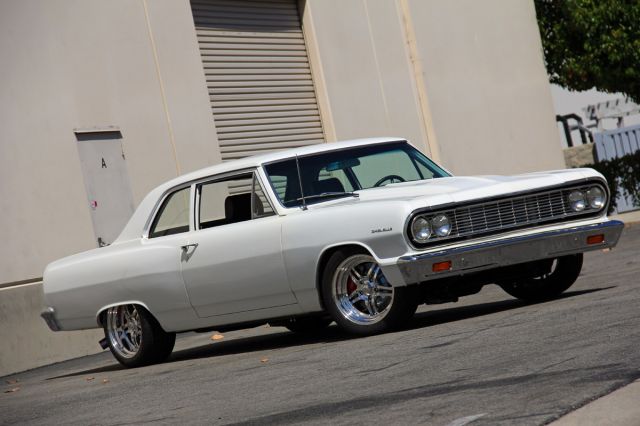 To get these tires mounted up to the car takes the right wheels, and the right backspacing. The proper backspacing can put your wheels in the center of the wheelhouse where it belongs, and Billet Specialties has the option to order your wheels with different backspacing to suit your needs. There are a lot of great looking wheels available, but sometimes you can’t find the right offset and you have to use wheel spacers or find another wheel. That usually puts a damper on things, so having this option can save time and money.
To get these tires mounted up to the car takes the right wheels, and the right backspacing. The proper backspacing can put your wheels in the center of the wheelhouse where it belongs, and Billet Specialties has the option to order your wheels with different backspacing to suit your needs. There are a lot of great looking wheels available, but sometimes you can’t find the right offset and you have to use wheel spacers or find another wheel. That usually puts a damper on things, so having this option can save time and money.
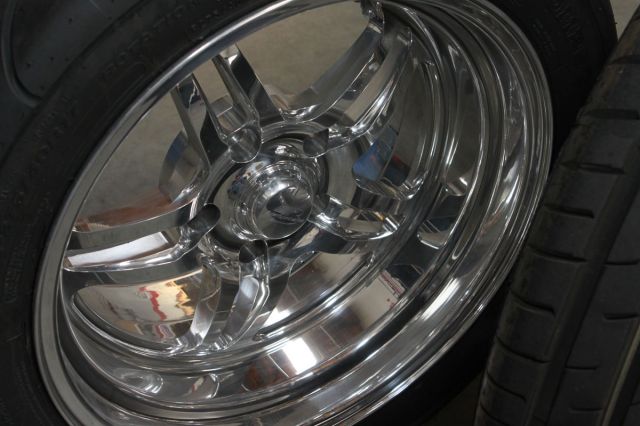 We reached out to Billet Specialties and got a set of their Challenger billet wheels from their Street Smart Line of billet wheels. The classic five spoke design with a modern flair is a great look for the Chevelle, and with the various sizes, widths and offsets available we were able to get a set of wheels that fit our needs. The Challenger is available from 15-20 inches, with widths from four to a whopping 15 inches wide.
We reached out to Billet Specialties and got a set of their Challenger billet wheels from their Street Smart Line of billet wheels. The classic five spoke design with a modern flair is a great look for the Chevelle, and with the various sizes, widths and offsets available we were able to get a set of wheels that fit our needs. The Challenger is available from 15-20 inches, with widths from four to a whopping 15 inches wide.
For BluePrint we used a 17 x 8-inch wheel for the front with a 4.5-inch backspacing, and for the rear we used a 17 x 9.5-inch wheel with a 5.25-inch backspacing to mount our Continental tires. Any wider in the rear would require some modifications, like tubbing the rear wheel wells. We have seen a few cars at the tracks with steamrollers in the rear, and while it looks pretty cool it’s also a lot more work than we had planned for our Chevelle. It’s also for more serious hardcore and purpose built racing. Our intention is to have a good track car – dragstrip and autocross – as well as being a comfortable any day driver.
Billet Specialties has a huge selection of wheels in dozens of designs and styles, and plenty of billet accessories to dress up the rest of your car. They have Tru Trac pulley systems for your engine, engine dress up kits, body and interior accessories and a great line of billet steering wheels.
Basics of Braking
Sidebar title
SSBC part# A123-14DSR (Front)
& A125-37R (Rear)
- Front: Tri-Power 3-Piston aluminum calipers; Rear: Single piston aluminum caliper
- Turbo Slotted Rotors with Xtra Life plating, 13-/12.8-inch front/rear
- Includes new 2-inch drop Spindles
- 9-inch booster, master cylinder
- Adjustable proportioning valve
- Braided stainless flex Hoses
- Works with virtually any aftermarket steering arms, including rack and pinion kits.
We wanted a good set of brakes to keep up with our 64 Chevelle’s performance and Stainless Steel Brakes Corporation (SSBC) had we needed to get the job done. Whenever you increase your power and handling, it’s always a good idea to have stopping performance to match. SSBC gives you plenty of options, including Tri-Power 3 piston aluminum calipers and cross-drilled and slotted rotors.
Multiple pistons help provide an even clamping force on the rotors for even pad wear. Cross-drilling on vented rotors helps the rotors to cool faster, and the slots help swipe the pads of gasses that build up between pad and rotor. The rotors are also larger diameter than stock, which greatly aids in braking power.
Our front braking kit included a 9-inch brake booster, master cylinder and drop spindles, 3-piston calipers and 13-inch rotors, as well as all the parts necessary to do a complete swap to front disc brakes. A proportioning valve included in the kit helps to fine tune rear brake pressure whether your are using stock drums or converting the rear to disc brakes, as we did. Our rear caliper kit is a single-piston design with 12.8-inch slotted and cross-drilled rotors
As with most cars, your front brakes will perform roughly 80% of your braking, this is where the adjustable proportioning valve comes into play. Under hard braking you should not have rear brake lock-up, especially when the fronts are not locking up.
The included booster, master cylinder and proportioning valve will help you get your brake bias dialed in properly. The front brake kit includes everything you need to add disc brakes to your car.
You can very easily test your rear caliper pressure by applying heavy brake pressure at a low speed. After you come to a stop, if your rear brakes locked up, you have too much pressure in the rear. The adjustable proportioning valve makes making these adjustments very easy, and a simple turn of the knob is all you have to do to add or remove pressure.
If you don’t have them adjusted properly, you’ll know in a hurry the first time you hit your brakes hard on a corner. If the back end washes around, then you’ll know you probably have too much pressure on the rear calipers, and you can back it off a little.
Suspension Hardware
When it comes to handling, there’s much more to it than having wide tires designed for competition. We had plenty of power with Project BluePrint’s LSX, great braking with the SSBC four wheel disc brake kit, but the wheels and tires can’t do all the work. Classic cars can now benefit from an upgraded and improved suspension, giving a lot of people the much wanted ability to drive their car more often.
Ridetech's Level 2 Suspension Package for BluePrint performs as great as it looks.
We called on Ridetech to get us set up for handling, and their Level 2 GM A Body CoilOver System gave our Chevelle a much better stance and far better handling than Chevrolet intended back in 1964. They have dozens of kits to chose from with several choices for each kit, or you can buy just the individual components that you want to add to your car.
Most guys who just want to attend a couple events will be fine with the Ridetech Level 2 kit. -Bret Voelkel
Many custom fabricators build a complete new chassis when they build a custom vehicle, with custom arms and links. That’s great for anyone who has that kind of time and money, but thanks to Ridetech you can buy upgraded suspension kits that bolt to the factory locations. For Project BluePrint, Ridetech has three levels with air shocks, and three levels with coilover shocks, giving us the option to fine tune our Chevelle the way we wanted it.
Comparing old to new, the difference is substantial in both looks and in performance.
Up front, Ridetech’s StrongArms upper and lower control arms are just that: stronger than the factory control arms. The kit also includes a pair of spindles that maintain proper steering geometry whether you are using the factory steering box or rack and pinion steering. Out back, their StrongArms upper and lower links are used; the upper links are adjustable with articulating rod ends to help eliminate bushing bind.
Also in the kit were their Level 2 CoilOver shocks to give us better handling. The Level 2 kit includes single adjustable shocks, while the Level 3 kit includes triple adjustable shocks for those who want to take their autocrossing to the next level. The Level 3 kit is for those who are more serious about autocross, but Voelkel also deals with customers who are more versed with what they need and what makes their car handle. We also got Ridetech’s MuscleBar front and rear sway bars, which greatly enhance the handling over the factory front sway bar.
The Ridetech Level 2 system is for the guy who wants a really good handling car, and is going to drive a little more aggressively.
-Bret Voelkel
The installation of Ridetech’s suspension kit is very straight forward. The best part of this kit is that you don’t have to modify anything to mount the control arms, shocks or sway bars. Now you can have your cake and eat it too, whether you want to have a better stance for cruising, or firmer handling for better autocross performance. In order to use their coilover shocks, however, you must use their StrongArms control arms since coilover shocks eliminate the factory coil spring, and the coilovers are thicker than the factory shock.
Both upper and lower StrongArms include the ball joints, always a good idea to replace when you’re replacing control arms. The arms also accommodate the coilover shocks. The tubular design is popular but it’s not all show, it’s stronger than the stamped steel factory arms – which sometimes get boxed for strength.
The included spindles have a 2-inch drop to allow your car to sit lower than stock. This not only improves the look, but it gives a lower center of gravity that gives you better handling. But lowering a car is more than that, and these kits all have the proper geometry so tire wear isn’t going to be an issue.
Ridetech’s spindle is also about 1.75-inches taller than the OEM spindle. This change increases the camber gain during hard cornering to allow the tire to lean into the turn instead of away from it. Whenever you lower a vehicle, it’s not an immediate guarantee that you’re handling will improve, if you don’t address the camber and castor issues that may arise, you could find yourself wearing out your tires quicker than expected.
Comparison of the original suspension and the upgraded Ridetech suspension package is like night and day.
Driving Impressions
When we first snagged the keys for the BluePrint Chevelle from the original owner, he had installed upgraded sway bars with otherwise stock suspension. With the stock 15-inch wheels and tires, comparing the ’64 in a hard apex to a rolling land-yacht wouldn’t be far off. Tire scrub, understeer, and undesirable car control were the victim of the stock 1960 era engineered suspension system. The upgraded sway bars tried to do their part, but the rest of the system was unwilling.
When the last nut was twirled on the Chevelle, the anticipation of flat cornering, crisp car control and driver confidence were hard to ignore. And despite the mass of almost 4,000 pounds of GM’s finest to contend with – we’re proud to share with you that Ridetech has managed to corral all of that weight and designed a system that works. The Chevelle feels light on it’s feet – a majestic act considering it’s tonnage – and has good turn in, with a neutral steering feel that allows you to really get a sense of where the car is on the turn and what it’s going to do if you crank the wheel harder. Best of all, even though the coil-over Ridetech shocks and springs are stiffer than our OE-offerings, they are not so stiff that your wife wouldn’t hop in the car with you and not complain.
The upgraded Billet Specialties wheels and Continental Tires – wider, stickier, and no doubt a substantial upgrade over our stock rubber – should share in the accolades. It’s a well engineered combination that brings a smile to our face.
Overall impression
From canyon-carving to daily driving, the upgrades to your suspension, wheels, tires and brakes means you can now run with almost anything out there at the track, and it almost guarantees that you’ll want to drive your car even more than you used to. There’s still a niche for stock restorations and trailer queens, but for people who don’t want to leave their classic or muscle car locked up six or more days a week, these upgrades that we installed on BluePrint have turned this Chevelle into a driver.
We ran our Chevelle at the Goodguys Autocross earlier this year on the stock suspension, with plans to take it back to Super Sunday and see how much better we can do with our upgrades. Keep an eye out for our updates on Project BluePrint and we will be sure to keep you posted on the progress, and all the fun we plan to have with it.
If you’re looking to upgrade your classic or muscle car, be sure to do your homework and get the right parts from the right people, and let us know if you’re going to be at Goodguys in Del Mar this year so you can come and check out Project BluePrint up close and personal.

